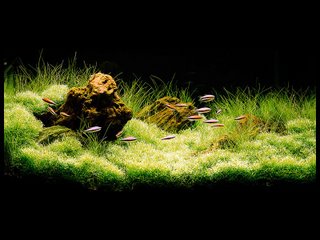
Common name: Rummy Nose Tetra
Scientific name: Hemigrammus bleheri (false), H. rhodostomus (true), Petitella georgiae (false)
Geographic location: South America
Size: Up to 6.5cm (2.5 inches)
Temperament: Passive
Conditions: 72F-82F, pH 5.5-7.0
Skill level: Intermediate
Minimum tank size: 20 gallons
The true Rummy Nose Tetra (H. rhodostomus) is often confused with two other species: H. blehri and Petitella georgiae. All three are sold under the same common name and the differences are not easily observed. Unless you are searching for a particular species for some reason (and I can't see why most hobbyists would) all three look similar and behave similarly. For those of you looking to distinguish them, H. bleheri have sharper white markings on the tail and the mouth is red, and H. rhodostomus has a black stripe that enters the body from the tail. All three have gorgeous red noses and heads, which is where they get their common name. This red marking is highly dependent on water quality and stress levels.
The Rummy Nose Tetra comes from dark rivers in the South American rain forest and does best in aquariums that mimic this habitat. It is a skittish fish and is easily scared and stressed. It should be kept in groups of 5 or more since it is a naturally schooling tetra (and one of the best schooling fish I've kept). There should be plenty of hiding places and cover to prevent unnecessary stress. Use of "dither" fish is also recommended, as keeping these fish alone in an aquarium often results in the school hiding or darting nervously around the tank. Having some less skittish species helps to reassure the Rummy Nose Tetras.
These tetras are fairly hard to keep and are very sensitive to water quality and stress. They are like a barometer for the aquarium: when their noses are a healthy red, everything is going well, but when the red fades, there is something wrong. They must be adjusted slowly to new tanks and the water must be changed weekly.
If you are looking for an active, colorful, schooling fish for a planted community aquarium, the Rummy Nose Tetra can be a perfect choice.










































